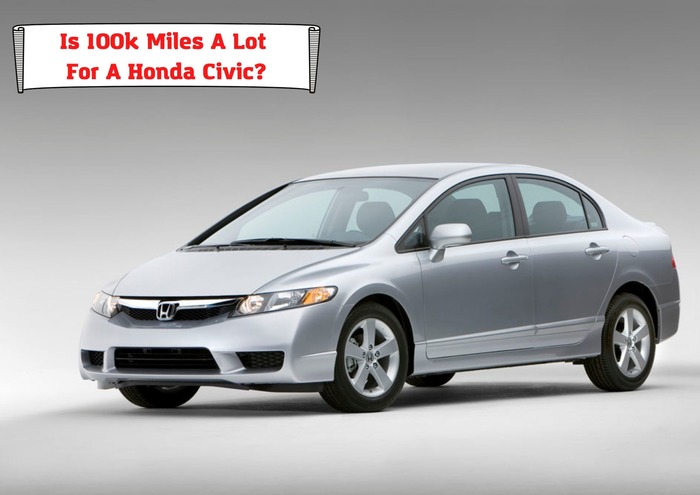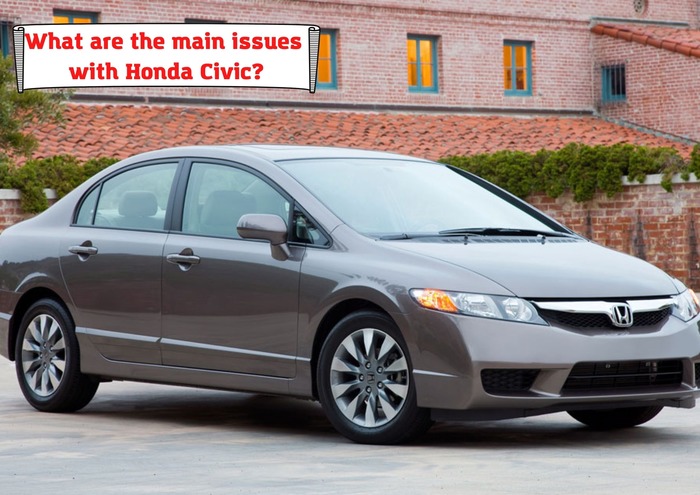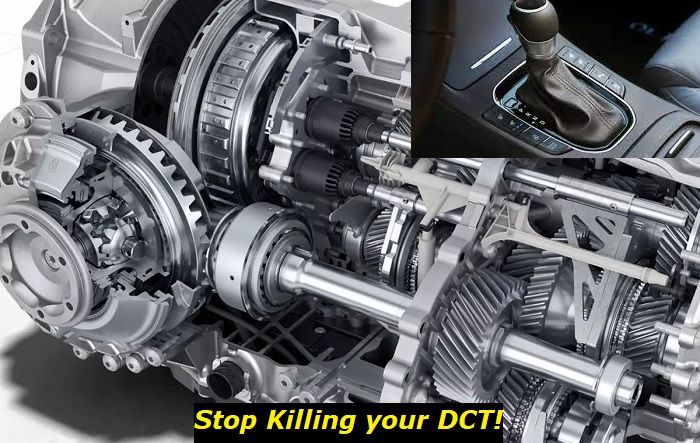
Honda Civic is one of the most popular compact sedan cars on the market. From 2012 to 2019 Honda was selling over 300 000 Civics in the US yearly. This makes the car one of the most wanted vehicles of this class. So, today we decided to learn whether the Civic is actually a good car.
The task is hard because hundreds of trims have been sold with different engines and transmissions. And if one Civic trim could be a very long-lasting choice, some other modification proved to be even less reliable than the cheaper competitors. In our today’s article, you will find out if 100 000 miles is a lot for a Honda Civic or not.
Here are some questions we’ll answer:
- Best year, engine, and transmission of Honda Civic among recent generations.
- The average mileage of a Civic you can rely on.
- Popular problems and issues that can happen with a high-mileage Civic.
- Prices for new and used cars in the US.
Let’s get started!
What is the most reliable Civic among the last generations?
You should remember that the 2001-2006 Honda Civic is probably the worst choice you can make when buying a used car. Numerous recalls, a lot of problems, expensive breakdowns, and even issues with driver’s safety are there to cope with.
But in 2006 Honda made numerous improvements under the risk of losing the market, and this year is thought to be one of the best ones. So the years 2006-2011 are the best if you are searching for a decent car with low price and wonderful longevity.
But in 2019, Honda started the new generation of Civic which is now the most technological and the most efficient in terms of engines. We would opt for this generation if we were to choose the best year of Honda Civic. The 2019 generation is much better than the previous Civic and it’s a really good car for anyone.
2019 Hinda Civic – main facts
We already have enough information to estimate the longevity of the Civic. The 10th generation is not the cheapest car on the market. The cheapest trim, called LX, will cost you around $23,300 which is more expensive than many competitors. The most expensive trim of sedan, Touring, costs over $29,900. Civic Hatchback is even more expensive, for some reason. And there is a special trim called Si that you can buy for more than $28,000.
Here are some technical facts you should know:
- the base Civic comes with a 2-liter naturally aspired engine which is a classic motor with no issues and with wonderful longevity;
- then, there is a 1.5-liter turbocharged engine with 180 and 200 hp of power, but this engine shows worse longevity than the 2-liter one;
- you will have two options of transmissions: the CVT and the manual transmission as an option;
- sharp handling is a really exclusive feature of this vehicle that makes it fun to drive;
- fuel economy is quite good – we would say much better than with most competitors on the market.
Now, it’s not that easy to find an optimal trim. If you want an automatic transmission, you will need to put up with the CVT which isn’t that good in long-term driving. If you want a manual transmission, you will have a sporty vehicle with a lot of expensive add-ons and options that you will have to pay for. Civic will make you think a lot when choosing the optimal trim and some paid options you will want to include in your vehicle.
100 000 miles – too much?
For Honda Civic, the average mileage is estimated to be around 250 000 miles. But a lot of features should be taken into account. Your first investments in the car will come at around 100 000 miles and they will only get bigger as the mileage keeps growing. If you bought the new car in 2019, and it now shows around 100 000 miles on the dashboard, you should start thinking about buying a new vehicle and selling your Civic.
Here are some reasons why it is a good tip:
- The continuously variable transmission (CVT) is not a very good choice in a long run. This transmission will probably work well up to 100 000 miles or 140 000 miles with regular oil changes and then it will require replacement or a costly repair.
- Suspension wear and tear will also require some investments. You may know that labor costs at Honda service stations are not that cheap.
- The turbocharger in the 1.5 engine can also bring some problems. Especially, if the car wasn’t serviced correctly and was used as a sports vehicle for racing or extremely active driving.
- A lot of minor issues with wiring, engine systems, electronics, technologies, etc. All these minor issues will not be budget-friendly. Honda may seem like a mid-priced car, but it will cost a lot in repair.
- General wear and tear will create more problems. After the car has successfully passed the 100 000-mile mark, it can be not so attractive because of some paint issues, worn-out leather, and plastic parts in the interior.
So, it’s not very easy to say whether 100 000 miles on the clock is a lot for Honda Civic. If you are looking at the 1.5 turbocharged engine with a CVT, it’s a lot for this couple. But if you have a 2-liter engine, this motor can easily go another 100 000 miles.
What are the main issues with Honda Civic?

The majority of popular issues with the Civic are minor. So sometimes you won’t even need to spend your time and money to fix them. But these minor issues will be time-consuming and irritating from time to time.
Everything depends on the mileage, but we’ve found some common issues that you are likely to experience in a 10th generation Civic over time:
- airbag light occasionally flashing for some reason – no one knows why;
- wiring problems that start bothering you after 100 000 miles – for example, headlights may stop working;
- handbrake issues – the system is so bad that it keeps breaking all the time;
- engine overheating (1.5 turbo) – a common problem with no proper solution;
- music and navigation troubles – infotainment system is not the most reliable one;
- body issues – rust doesn’t appear too fast, but the paint can chip off easily.
Considering all these factors, you can imagine that after 100 000 miles of driving you will have a bunch of issues with your Civic that will need your money. It doesn’t mean that the car isn’t reliable, but it could be a little more durable, we suppose.
Older generation problems – what to check in your Civic?
When you want to buy a used Civic of the 9th or 8th generations (we don’t recommend the 7th and previous generations), you will have to look at some parts. This will ensure that you will use your car for a long time with no problems. At least, with no expensive problems.
Here’s what you need to check:
- The first part is the engine. Civic had wonderful engines in all these generations, but turbo engines were less durable and they need proper investigation. Especially, pay attention to turbochargers as they tend to ask for an expensive repair.
- CVT transmissions don’t last longer than 130-140 thousand miles. After that, it’s cheaper to replace them than to repair. The new CVT will cost you a fortune, so make sure you can get a decent used CVT transmission if the one you have is broken. Simple automatic and manual transmission in Honda Civic can survive much longer.
- Mileage. We don’t recommend buying a Civic with over 200 000 miles on the clock. Such a car should be considered dead or pre-dead, so you will have to invest in it every other month. You will probably see a mechanic in a local garage more often than you will see your spouse. And this is not good.
- Maintenance. Be very careful with choosing your used Civic because if it was poorly maintained, it will demand a huge amount of money for repair and servicing. Check whether the previous owner serviced the car properly, changed the oil with proper intervals, and the car has all the records in the service database.
Also, we don’t recommend you buy a salvage Civic. Yes, they are much cheaper, but we know many issues with those cars falling apart after 10 or 15 thousand miles just because they were rebuilt poorly.
Final words
Honda Civic is a great car that can be both a family vehicle or a car for a student. It’s beautiful, very comfortable, fun to drive, and economical in terms of fuel consumption. But we would say that a Civic with 100 000 miles on the clock is a risky car, especially if you have the CVT transmission and the turbocharged engine.
The 2-liter engine and the manual transmission are really good, but they never come together in any of the Civic trims. If you are going to buy a used Civic or to buy your leased car from a leasing company, investigate the vehicle and find out whether it’s going to need some investments soon.
About the authors
The CarAraC research team is composed of seasoned auto mechanics and automotive industry professionals, including individuals with advanced degrees and certifications in their field. Our team members boast prestigious credentials, reflecting their extensive knowledge and skills. These qualifications include: IMI: Institute of the Motor Industry, ASE-Certified Master Automobile Technicians; Coventry University, Graduate of MA in Automotive Journalism; Politecnico di Torino, Italy, MS Automotive Engineering; Ss. Cyril and Methodius University in Skopje, Mechanical University in Skopje; TOC Automotive College; DHA Suffa University, Department of Mechanical Engineering






Add comment